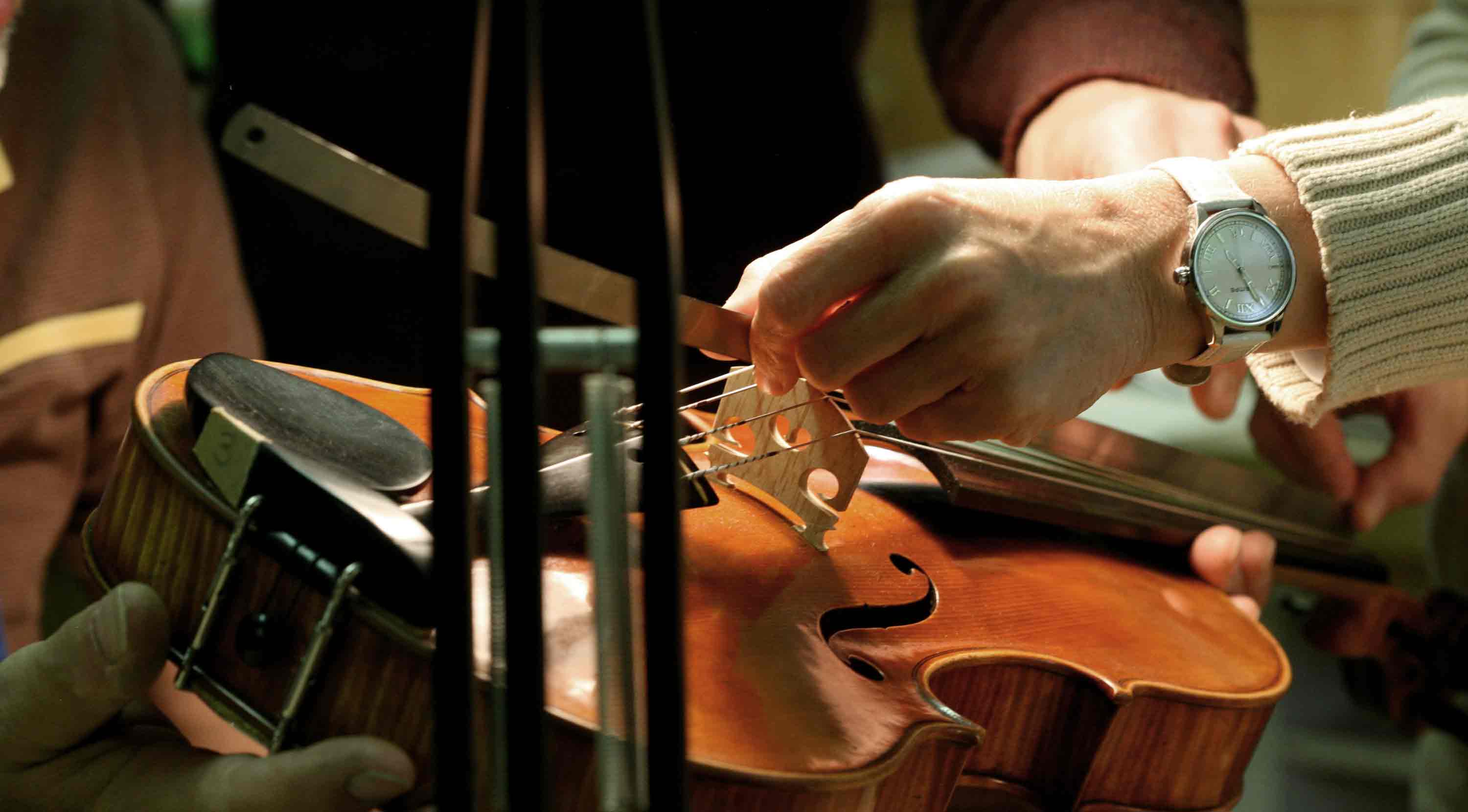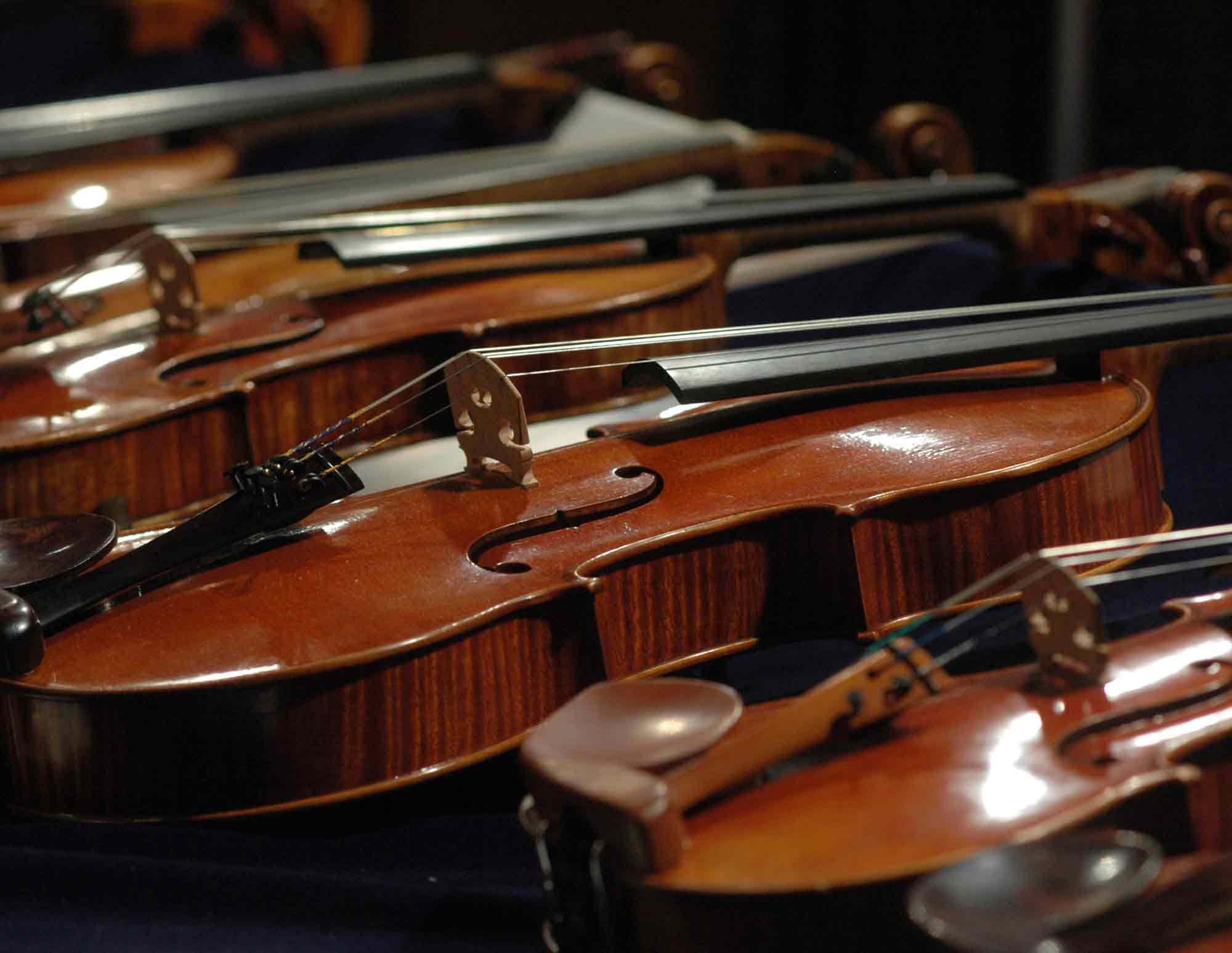TRY OUT – LISTEN – DISCOVER
KlangGestalten's Quest
The long-running series of workshops organised by KLANGGESTALTEN has become a key event where violinmakers can develop and exchange ideas. The respective focus that each maker devotes to every stage of an instrument’s creation can be shared and compared with alternative and contrasting methods used by others to achieve expert results.
The deliberate aim we pursue in our workshops is to find and ask questions related to the understanding of the violin, to develop existing research methods and define new realms of investigation. The participants’ vast accumulated knowledge and experience is not only of great value; advanced technical equipment and processes also play a vital role.
Traditional tools such as the compass are admirably sufficient to construct violin outlines and arching; classical geometry and arithmetic remain the essential tools for calculating a balance of physical forces to optimise constructive efficiency. But modern tools also have much to offer: computers enable multifactorial measurement when we analyse the subtleties of amplitude and timbre, using the Fourier transform and spectrograms to make sounds visible and directly comparable.
Varnish quality is critically evaluated with the measure of experience – but here, too, modern methods of chemical and physical analysis enable direct comparison with the old varnish samples we aspire to emulate.
To create a violin, a great deal of knowledge, skill, experience and acute perception is required. Nevertheless, one fact holds true: the test of a truly great violin is the ability of its tone to touch our emotions.







